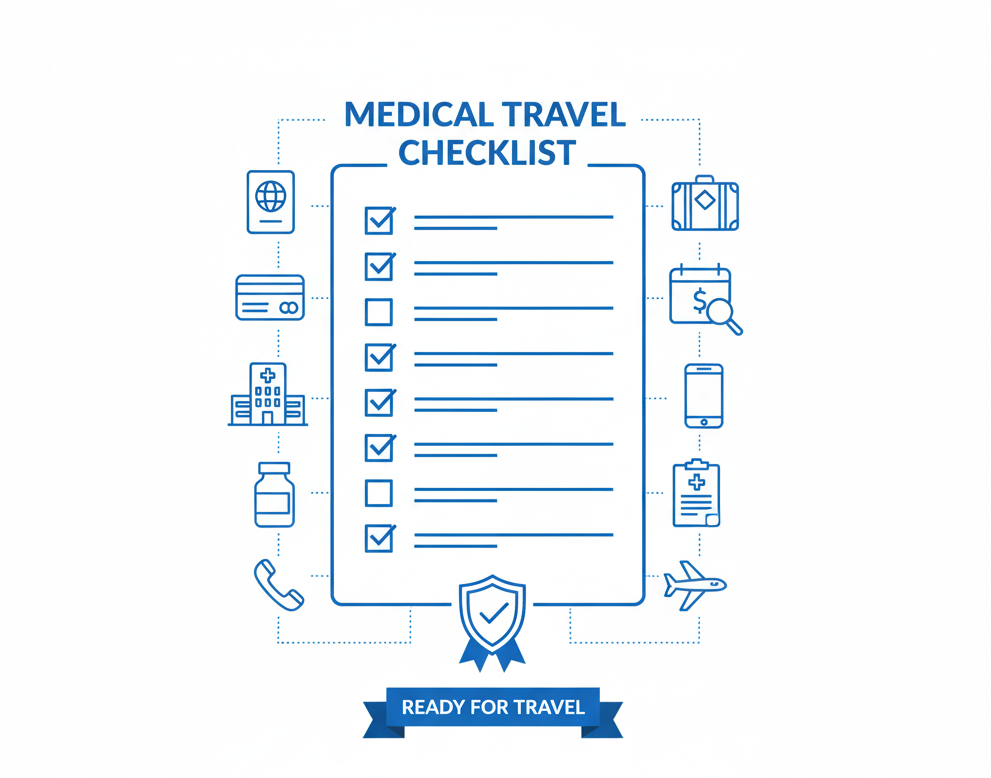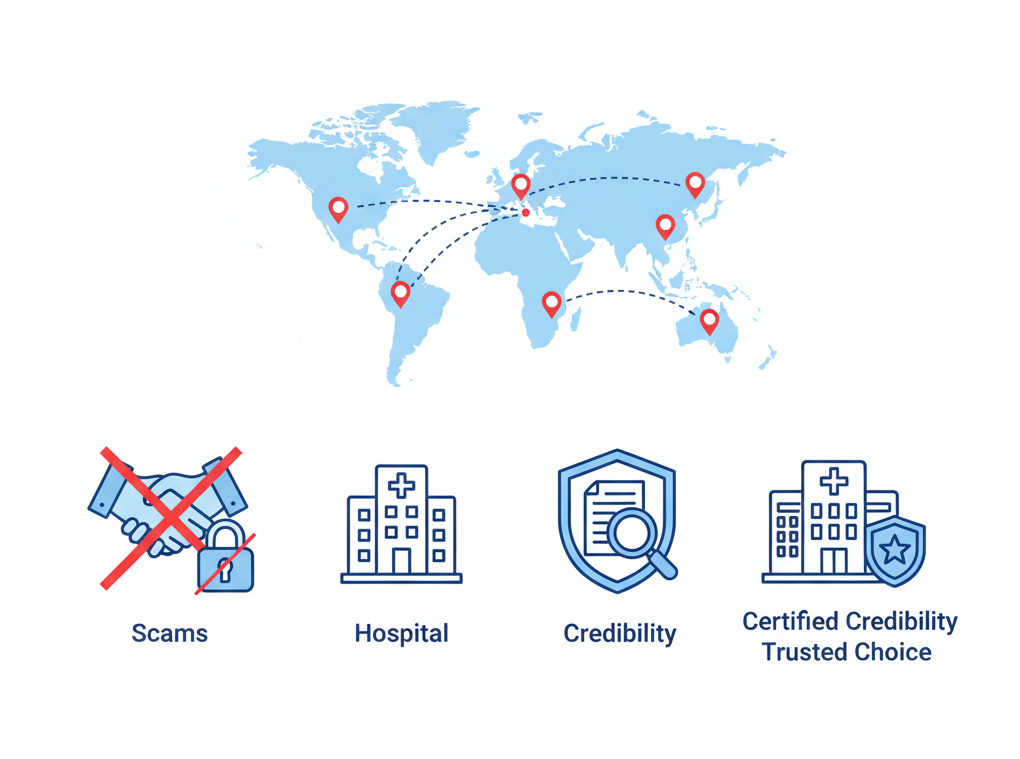
Top 10 Common Procedures People Travel Abroad For
The global medical tourism industry continues to expand rapidly in 2025, propelled by soaring healthcare costs, limited local treatment options, and the quest for affordable, high-quality care abroad. Patients seek healthcare journeys tailored to their specific medical needs, spanning elective aesthetic enhancements to life-saving surgeries. Medical tourism platforms and hospitals worldwide are evolving to serve this growing demand with innovative offerings, competitive pricing, and integrated travel solutions.
This guide details the top 10 most sought-after medical procedures internationally, explaining why patients travel for these treatments, which countries excel in providing them, and current industry trends to watch.
1. Cosmetic and Aesthetic Surgery
Overview:
Cosmetic surgery remains the leading segment of medical tourism, driven by demand for body-positive transformations, non-invasive rejuvenation, and affordability. Procedures range from rhinoplasty and breast augmentation to liposuction, facelifts, blepharoplasty (eyelid surgery), and buttock augmentations like the popular Brazilian Butt Lift.
Why Patients Travel:
-
High costs and limited insurance coverage at home.
-
Access to experienced surgeons in destination countries specializing in specific cosmetic fields.
-
Comprehensive care packages combining treatment, luxury accommodations, and post-op wellness retreats.
-
Privacy and anonymity in foreign settings.
Top Destinations:
Turkey leads globally in cosmetic surgeries at competitive prices. Thailand, Brazil, South Korea, Mexico, and India follow closely, each with distinctive specialties and internationally accredited clinics.
Emerging Trends:
-
Increased use of minimally invasive procedures with reduced recovery times.
-
AI and robotic assistance in microsurgeries improving outcomes.
-
Growth of male cosmetic patients and non-surgical treatments like injectables.
2. Dental Care and Oral Surgery
Overview:
Dental tourism is one of the most mature and well-established medical tourism categories, encompassing procedures like dental implants, crowns, bridges, root canals, veneers, and orthodontics.
Why Patients Travel:
-
Significant cost reductions—dental implants costing 60-70% less abroad.
-
Short waiting periods compared with domestic clinics.
-
Superior technological capabilities in major medical tourism hubs.
Top Destinations:
Mexico is a key market for North American patients. Turkey, Hungary, Colombia, Costa Rica, and Thailand offer competitive pricing with high-quality care.
Emerging Trends:
-
Use of digital dentistry and 3D printing for faster, more customized prosthetics.
-
Online consultations and coordinated travel-health packages boosting convenience.
3. Fertility and Reproductive Treatments
Overview:
With global fertility rates declining and assisted reproductive technologies advancing, patients increasingly travel for IVF, egg retrieval, sperm donation, embryo freezing, and surrogacy.
Why Patients Travel:
-
Lower treatment costs, including expensive medications, by 60-80%.
-
Less restrictive national regulations allowing more flexible family-building options.
-
Access to cutting-edge fertility clinics employing latest protocols.
Top Destinations:
India, Spain, Thailand, Malaysia, and Greece are noted fertility hubs combining expertise with cost savings.
Emerging Trends:
-
Personalized medicine approaches using genetic testing for optimized IVF success.
-
Increasing international fertility collaborations and cross-border surrogacy services.
4. Orthopedic and Spine Surgeries
Overview:
Major orthopedic interventions like hip and knee replacements, spinal fusion, and minimally invasive arthroscopy attract medical tourists seeking quality care with faster scheduling.
Why Patients Travel:
-
Cost of joint replacements is roughly 60-75% cheaper abroad.
-
Hospitals in top destinations maintain JCI accreditations and advanced surgical robotics.
-
Access to physical rehabilitation and multi-disciplinary teams in destination countries.
Top Destinations:
India, Thailand, Mexico, Turkey, and Malaysia are distinguished centers for orthopedic tourism.
Emerging Trends:
-
Use of AI in surgical planning and outcome prediction.
-
Rise of outpatient joint replacement surgeries reducing hospital stays.
5. Bariatric (Weight-Loss) Surgery
Overview:
Bariatric procedures including gastric bypass, sleeve gastrectomy, and gastric banding are increasing among medical travelers due to high obesity rates and ballooning domestic costs.
Why Patients Travel:
-
Countries like Mexico, Brazil, and India offer these surgeries at 50-70% lower cost.
-
Access to comprehensive programs integrating surgery with diet, psychological support, and lifestyle coaching.
-
Shorter wait times compared with many domestic healthcare systems.
Emerging Trends:
-
Growth in multidisciplinary bariatric centers offering full continuum of care.
-
Use of minimally invasive robotic approaches improving safety.
6. Oncology and Cancer Treatments
Overview:
Patients often travel abroad seeking not only affordability but also access to advanced radiotherapies, chemotherapy protocols, targeted therapies, and clinical trials.
Why Patients Travel:
-
High cost of cancer treatment domestically.
-
Availability of cutting-edge technology (proton therapy, immunotherapy) in destinations like India, Singapore, South Korea.
-
Second opinion and tailored personalized oncology care.
Top Destinations:
India, Singapore, Germany, and South Korea lead in oncology medical tourism.
Emerging Trends:
-
Rising integration of AI and big data analytics for precision oncology.
-
Increasing global clinical trial participation driving outbound patient flows.
7. Organ Transplants
Overview:
Organ transplantation involves kidney, liver, heart, and lung replacements. Medical tourism arises from long domestic waitlists and exorbitant costs.
Why Patients Travel:
-
Cost reductions of 50–80% on transplants and associated care.
-
Well-developed transplant programs in India and Turkey with expert surgeons.
-
Ethical considerations necessitating transparency and regulations.
Emerging Trends:
-
Advances in organ preservation and donor matching technology.
-
Strengthened international oversight to prevent illegal transplant tourism.
8. Cardiology and Cardiovascular Procedures
Overview:
Surgeries for cardiac bypass, valve repair/replacement, angioplasty, and arrhythmia treatments are among top cardiac procedures sought internationally.
Why Patients Travel:
-
Procedural costs 70-80% lower in countries like India and Thailand.
-
World-class cardiac centers using robotic and AI technologies.
-
Shorter wait times and personalized post-op cardiac rehab.
Emerging Trends:
-
Remote monitoring technologies integrated with post-operative care.
-
Expanding adoption of minimally invasive catheter-based therapies.
9. Neurology and Neurosurgery
Overview:
Treatment of neurological disorders including brain tumors, spinal conditions, and epilepsy surgery is increasingly done abroad for enhanced expertise and cost savings.
Why Patients Travel:
-
Advanced neurological care in Germany, India, South Korea.
-
Cost savings of 50-70% with advanced imaging and surgical technologies.
-
Coordinated care pathways incorporating rehabilitation and telehealth.
10. Ophthalmology and Eye Care
Overview:
Common procedures such as LASIK, cataract surgery, and glaucoma treatments draw patients seeking excellent outcomes and affordability.
Why Patients Travel:
-
Costs up to 70% lower in countries like India, Thailand, and Singapore.
-
Cutting-edge laser technologies and skilled surgeons.
-
Quick turnaround times for elective eye surgeries.
Why These Procedures?
These ten procedure categories reflect a mix of elective and critical care treatments, chosen for their high domestic cost, technological complexity, or accessibility challenges. Patients value medical tourism for:
-
Major cost reductions without sacrificing quality.
-
Access to skilled specialists, often trained in Western countries.
-
Reduced wait times for elective and urgent procedures.
-
Opportunities for recovery in appealing vacation destinations.










